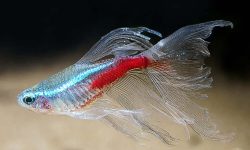Fish are among the most diverse and unusual creatures on Earth, ranging from luminous deep-sea dwellers to brightly colored coral reef inhabitants. But some fish have evolved even stranger adaptations: horns. While we usually associate horns with land animals like goats or antelope, several species of fish have developed horn-like protrusions on their heads or bodies. These odd structures may help them deter predators, attract mates, or camouflage with their surroundings.
In this article, we dive into the underwater world to explore 10 of the strangest horned fish on the planet. Are these bizarre aquatic creatures the most unusual examples of horned life in the oceans and rivers? Let’s find out.
1. Longhorn Cowfish (Lactoria cornuta)
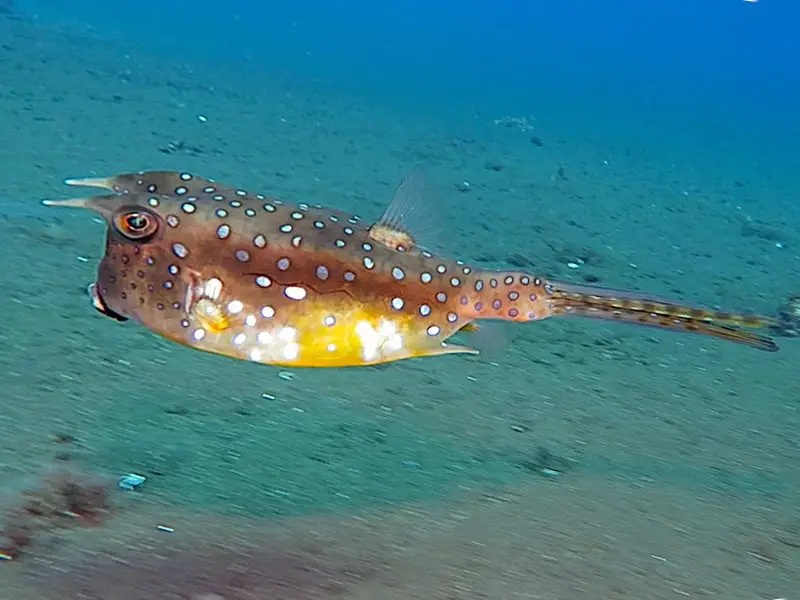
A Cow with Fins
The longhorn cowfish is perhaps the most iconic horned fish. Named for its long, protruding “horns” extending from both sides of its head, this marine species resembles a miniature yellow box with fins. The horns are not true bone but hardened extensions of its skin and underlying tissue.
Habitat and Behavior
Found in the Indo-Pacific region, especially around coral reefs, longhorn cowfish are slow swimmers that rely on their bony armor and toxic slime to deter predators. When threatened, they can release a toxin called ostracitoxin that is harmful to nearby fish.
Evolutionary Advantage
The horns serve as a visual deterrent, making it harder for predators to swallow them whole. The rigid, box-like body is also a defense mechanism, offering structural protection.
2. Short-horned Cowfish (Lactoria diaphana)
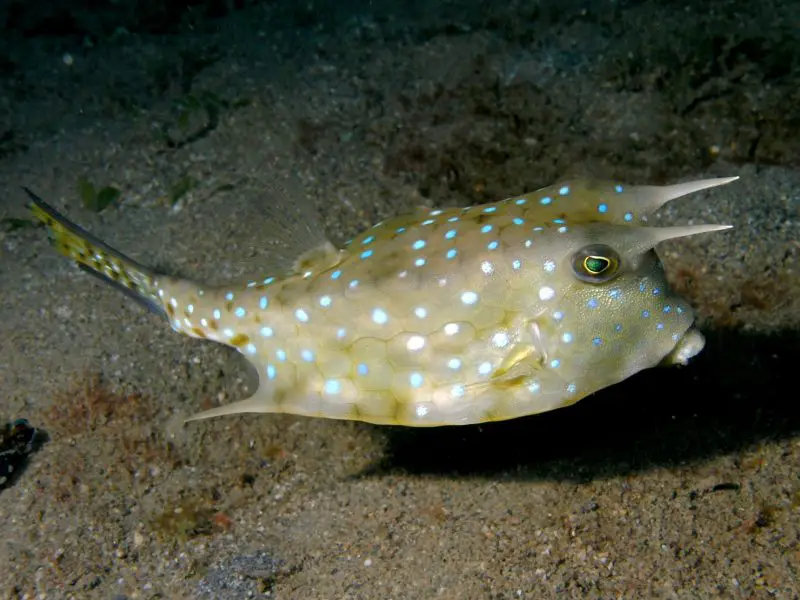
A Compact Relative
A close cousin of the longhorn cowfish, the short-horned cowfish features smaller horn-like structures but shares the same box-shaped body. It is more transparent, hence the species name diaphana, which means “translucent.”
Defensive Capabilities
Like its longhorn cousin, it secretes a toxin when threatened. Its horns, though less dramatic, still play a role in deterring predators.
3. Horn Shark (Heterodontus francisci)
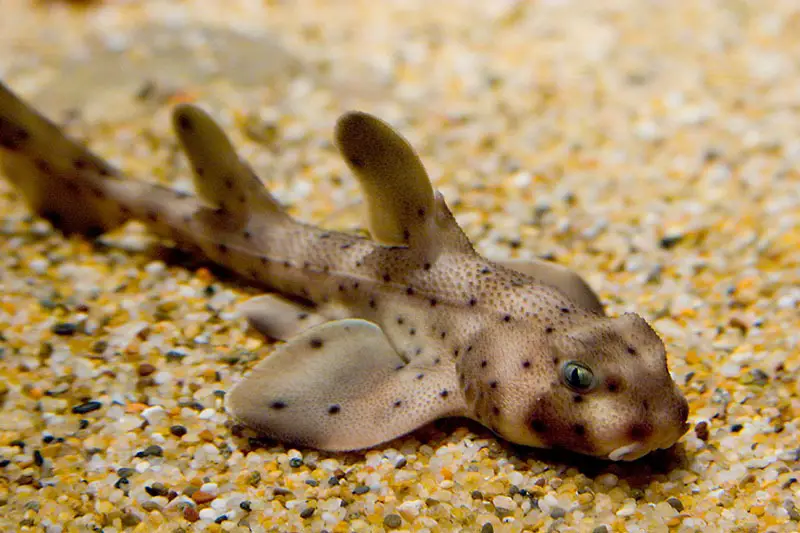
Not Just a Name
Despite its small size, the horn shark earns its name from the prominent spines—or “horns”—in front of each dorsal fin. These spines are sharp and capable of inflicting painful wounds.
Habitat
Native to the coastal waters of the eastern Pacific, particularly around Southern California and Baja California, this nocturnal predator hides in rocky reefs and kelp forests during the day.
Survival Tactics
The horn shark uses its strong jaws and molar-like teeth to crush hard-shelled prey like crabs and sea urchins. Its horned fins act as a defensive shield against larger predators.
4. Bristlenose Pleco (Ancistrus sp.)

Horns for Romance
These freshwater catfish are known for their “bristles,” which resemble a cluster of horns on the male’s snout. These fleshy appendages are not rigid but serve a crucial role in mating displays.
South American Native
Native to the Amazon and Orinoco river basins, bristlenose plecos are popular in aquariums for their algae-eating habits and unique appearance.
Gender Differences
Females also have bristles, but they are usually much smaller or absent entirely. Males with the largest and most elaborate horn-like bristles are often the most successful breeders.
5. Leafy Seadragon (Phycodurus eques)

Camouflage Expert
While not horned in the traditional sense, the leafy seadragon sports numerous protrusions that resemble seaweed, some of which look like antlers or horns. These adaptations provide excellent camouflage.
Where They Live
Endemic to the southern and western coasts of Australia, leafy seadragons inhabit kelp forests and seagrass meadows.
Threats
Due to habitat loss and their slow reproductive rate, they are considered near-threatened. Their bizarre appearance makes them a favorite in public aquariums.
6. Weedy Seadragon (Phyllopteryx taeniolatus)

Another Marvel from Australia
This close relative of the leafy seadragon features fewer and smaller appendages but still sports horn-like projections on its head and body. Its colorful, segmented appearance makes it look like a swimming plant.
Reproduction Uniqueness
Males carry the fertilized eggs on their tails, offering a rare example of paternal care in fish.
7. Devil Ray (Mobula spp.)

Devilish Appearance
The name “devil ray” comes from the two cephalic lobes on its head, which look like horns. These are not horns in the skeletal sense but are flexible appendages used to funnel plankton into their mouths.
Behavior and Range
Found in warm oceans around the globe, devil rays are known for their acrobatic breaches—leaping several feet out of the water.
Misunderstood Giants
Though imposing in size, devil rays are gentle filter feeders and pose no threat to humans.
8. Horned Blenny (Parablennius intermedius)
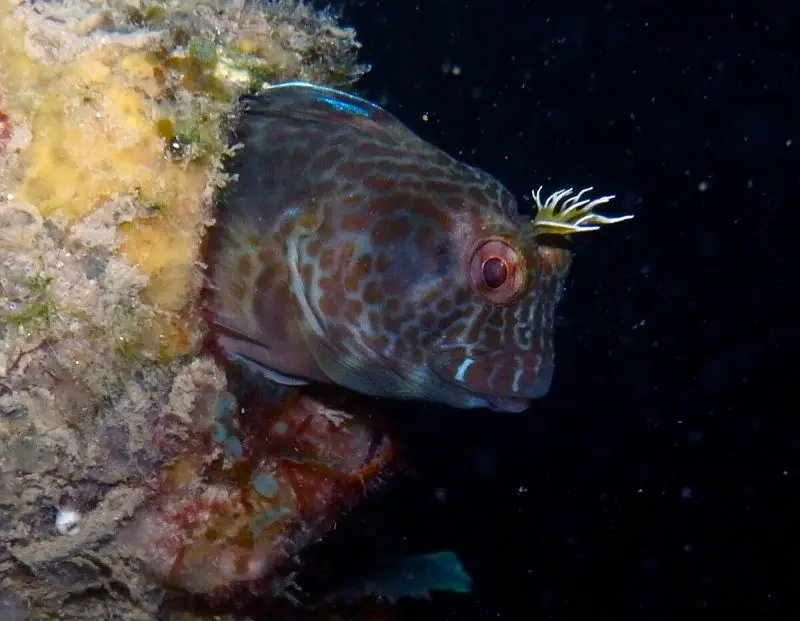
The Miniature Monster
This small coastal fish features fleshy tentacles that resemble tiny horns above its eyes. Although small, its fierce expression and “horns” give it a dramatic look.
Intertidal Habitats
Horned blennies inhabit rocky shorelines and tidal pools where they use their camouflaged bodies to hide from predators and ambush prey.
9. Bushynose Catfish (Ancistrus cirrhosus)

Similar to Bristlenose Pleco
Sometimes used interchangeably with bristlenose plecos, this species is also known for the bristly appendages on its face. These “horns” are fleshy and vary by individual and age.
Aquarium Popularity
Its ability to consume algae and its peaceful nature make it a favorite among aquarium hobbyists.
10. Unicornfish (Naso unicornis)

A True Horn
The unicornfish stands out for the single horn-like protrusion that extends from its forehead. Unlike the flexible appendages of other fish, this structure is rigid and bony.
Coral Reef Inhabitant
Common in the Indian and Pacific Oceans, particularly near coral reefs, the unicornfish uses its streamlined body to move quickly and efficiently.
Unknown Purpose
Despite its name, the function of the horn is still unclear. It may be used in social signaling or to establish dominance.
What Do These Horns Really Do?
Defense Mechanism
Horn-like features in fish—such as spines, plates, or rigid rays—serve as effective predator deterrents. Species like horn sharks and scorpionfish use cranial spines to make themselves harder to swallow. Others, like lionfish, combine physical defenses with venomous spines for added protection. Some catfish can even lock their fins into rock crevices to resist being pulled out. In reef environments, where predation pressure is high, these adaptations are key to survival.
Mating and Social Signals
In species like the bristlenose pleco, fleshy tentacle-like horns on the male’s head signal health and parenting ability. Females often prefer males with more elaborate features, a trait shaped by sexual selection. These structures also help establish dominance, reducing the need for physical confrontation among males during breeding season.
Camouflage and Mimicry
In fish such as leafy seadragons, horn-like appendages act as camouflage, mimicking seaweed or algae to hide from predators. These soft, flexible structures move with the current, enhancing the illusion. Similarly, rough tubercles on rays or bottom-dwellers help break up body outlines, blending them into their environment for both defense and stealth.
Feeding Adaptations
In devil rays, the horn-like cephalic fins are not for protection or display but are essential tools for directing food into the mouth.
Final Thoughts: Are These Truly the Strangest?
Whether they resemble cows, devils, unicorns, or leafy plants, these horned fish challenge our understanding of aquatic evolution. Their bizarre features are not just for show—they are survival strategies honed over millions of years.
While they may look strange to us, each “horned” structure plays a vital role in the fish’s life, whether for defense, feeding, or mating. The next time you peer into an aquarium or dive into a reef, keep an eye out—you might just spot one of nature’s most outlandish horned wonders.
So, are these the 10 strangest horned fish in the world? You decide.

